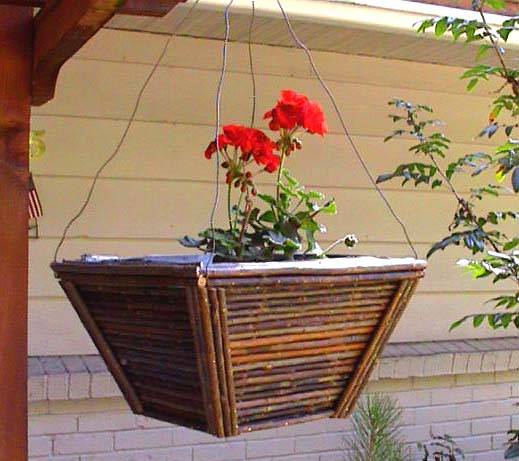

Cedar
wood hanging tub
Willow
Hanging planter
Annuals are often grown in wood hanging
tubs. Select the annual most adapted to the amount of light available in the
selected growing area. Make sure dripping water from the plants won't ruin
objects beneath the hanging pot. Large hanging plants can litter porches with
leaves and spent flowers. A soil mix suitable for hanging pots is one part soil,
one part peat moss, and one part perlite. To have full looking pots in early
summer, put at least six plants in one pot. If small plants are used more will
be needed, but fewer than six if large plants are used.
Watering becomes increasingly important during the summer. The
temperature increases causing the plants to lose more water. In addition, the
plants get larger so give off more water. Check the soil at least once a day and
perhaps twice. Regular fertilization will help keep the plants growing but over
fertilization will aggravate watering problems. Most fertilizers used according
to label directions will be adequate. Take the plant down to water then check
for pests and remove any dead flowers or leaves. If plants are hung high, pots
with wire hangers are easier to take down and hang back up. Select a height
which best displays the plant. If hung too high, relatively little of the plant
is seen. Some plants used in hanging pots are fuchsia, verbena, some types of
impatiens, hanging begonias, ivy geranium, and thunbergia.
![]() Gardeners' Corner
Kids'
Garden
Sustainable Garden
Contact Us
Gardeners' Corner
Kids'
Garden
Sustainable Garden
Contact Us![]()



